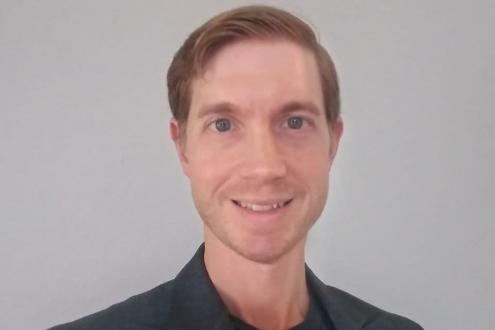Blockchain Platform & Enabler Chintai Ready for Explosive Global Growth of Digital Asset Issuances and Secondary Markets

Nov 30, 2021
David Packham is the Founder of Chintai, established since 2018 to promote the adoption of compliant digital assets that utilise blockchain technology to modernise capital markets for banks, asset managers, and family offices. Having worked in leading roles in several global investment banks and asset management institutions, and having been involved in advisory roles in several Singapore startups, he felt the time was right to seize the opportunity in digital assets and set out on this venture with co-founders, Ryan Bethem and Phillip Hamnett. Together they have been forging a business that provides users with a one-stop blockchain solution for digital asset issuance, high-performance secondary market solutions, automated compliance, cap table management, reporting and custody. Chintai keeps the entire life cycle of digital assets on-chain from issuance to maturity along with an automated compliance engine, because a fully on-chain solution will deliver the most competitive and efficient blockchain platform. Hubbis caught up virtually with David recently to learn more about Chintai’s mission to democratise access to digital assets, and their impressive progress so far, including a USD7.5 million funding led in May by B1 and Cryptology Asset Group.
David begins by explaining that Chintai has been creating a comprehensive digital asset issuance platform that increases productivity for issuers by significantly reducing administrative costs in the value chain of digital assets. They offer the capability to rapidly customise an issuance for virtually any asset, and to codify automated compliance requirements specific to the customer’s jurisdiction, as well as providing a secondary market ecosystem, and all within one easy to use blockchain platform. And through White Label customisation, Chintai provides a customised front end with the client’s branding to meet the specific needs of their market and in a relevant compliant and audit-traceable process.
He explains there are many advantages of assets tokenisation, including instant liquidity for illiquid assets, the digitisation of novel and collector assets (for example, art, fine wines, or other collectables), the avoidance of restrictive fees in the traditional issuance outlets and venues, global centric issuance, 24/7 trading, and reduced administration and compliance costs compared to mainstream markets.
The digital asset marketplace
“Chintai is building a digital asset blockchain platform, with automated compliance capabilities to transform the capital markets,” he explains. “Chintai provides a comprehensive blockchain solution that modernises capital markets for financial institutions, banks, asset managers and family offices. The provision of Chintai’s B2B platform can also be white labelled to help institutional finance to efficiently leverage the advantages of blockchain technology.”
The firm explains in their literature that the White Label secondary market solutions provide high-performance engine for digital assets with automated market-making and single-sided liquidity provision. Automated compliance is delivered via the proprietary Sentinel-AI solution to automate execution of regulatory compliance controls with smart contract-based transaction monitoring. This is an end-to-end on-chain solution.
Designed with the users in mind
“We have designed this platform to enable anybody to become an issuer of digital assets in any form, from utility tokens, right through to regulated assets like securities, real estate, bonds, and so forth,” he elucidates. “But it is more than simply issuing, as we also empower compliant and liquid secondary markets fit for their own jurisdictions. In a nutshell, this means we facilitate the issuance, market deployment and compliance for digital assets of all shapes and sizes. And our solutions can be either utilised directly through Chintai and our licensed-partners, or it can be embedded as a white label solution as a backend for a wide range of licensed- entities.”
He mines down further into the complex matter of digital assets and blockchain compliance, which he says is one of the single biggest challenges for financial institutions globally.
Rising above the compliance hurdles
“Financial institutions concern about regulatory compliance has been the primary consideration that prevented them from adopting and embracing the blockchain itself. The financial institutions have their brands and reputations to protect, and as the regulators are exploring these areas, they fear jumping in too fast and too far.”
“While they might be aware of the potential of blockchain technology and the transformative nature, many therefore remain reticent and reluctant to actually do more until such time as they feel comfortable with that. It is with all that in mind that we have developed the Sentinel AI module of Chintai, which is a compliance control rules engine embedded fully at the blockchain level.”
To demystify that statement, David says in practical terms it means that all of the underlying rules for a given jurisdiction can be programmatically embedded into the smart contracts and then automatically enforced. “There are approval and permission controls embedded from the ground up to enable the blockchain to service the needs of the financial services industry properly and therefore to satisfy all the nuances of compliance right down to specific levels and jurisdictions, and these have been core to our solution from day one, and very well received by financial institutions.”
The wide-angle blockchain picture
The big picture for the market, he reports, is the years ahead when regulators become more comfortable with digital assets, when these assets are far more accessible to a wider audience, including eventually retail buyers. “The benefits of this are vast, as it is a hugely more efficient design to move everything across the trade lifecycle on-chain , the single and irrefutable source. And the result should be that IPOs or bond issues that are the preserve of companies of a certain size are then accessible to smaller companies or start-ups, while a huge range of currently illiquid assets can be made liquid and distributed to the market.”
He recalls one of the early engagements the firm had with a Singapore-based mid-tier asset manager. “They came to us last year with a very well-defined digital asset strategy and saw that working with us was a chance to gain a competitive advantage over larger players in the origination and issuance side of their business, and also to generate new revenue streams. And their rationale broadly fits all firms in the asset management sector, as this translates into direct issuance and direct distribution, all at a remarkably low-cost base. In the end, they decided to go it alone, but that route might be fraught with difficulties and missed opportunities.”
Buy and get going
What Chintai provides is the underlying blockchain technology stack, which has taken several years to build out. “Hardly anybody amongst the asset managers has the in-house expertise to build out a bespoke blockchain platform, and indeed ours has taken several years to refine,” he says. “And in the mainstream financial industry, people do not build their own order management systems; they procure them from a specialist vendor. While these asset managers want to expand into digital assets, they don’t want to spend huge sums on building a platform that is likely to be out of date on day one. Leave it to the experts, us, who can offer them a white label solution that they can use on a modular basis and however it fits their business objectives. Moreover, the upfront cost is minimal.”
He closes the discussion with Hubbis by conceding that the bigger or biggest asset management firms might have tens of millions of dollars and the luxury of established brands and time to build their own platform and solutions if indeed they can get it right, but the risks for smaller to mid-sized firms in terms of time, money and resources are significant.
Stick to your areas of expertise
“The competition for us is more these firms taking the go-it-alone route rather than other direct competitors, whom we think have only got part of the solutions,” he says. “But we believe that is seriously risky to go it alone, and we wonder why anyone would want to do that. We also offer them first-mover advantage through the leveraging of our white label blockchain solution, and therefore to potentially establish themselves as an early leader in digital assets without a substantial capital outlay.”
And what that means is that asset managers, especially the mid-sized or smaller players, can realise some ambitions that might have been out of reach. “If they want to grow out from a mid-tier fund to one of the largest in the Asia region, for example, they can embrace this type of disruptive technology,” he says.
The assets tokenisation awaits
As to the actual assets to be issued and distributed, he says the most basic is the tokenisation of existing securities, but the real excitement should be digitising a whole new universe of assets, such as debt and real estate, or even collectables.
“Property is the single biggest driver of interest from asset managers to date; there are a lot of firms like Brookfield Asset Management on the larger side of this, down to smaller ones,” he reports. “There is an argument that as a global asset class, real estate is the most undervalued asset class relative to bonds or securities or anything else, given that it's a fully asset backed already. And why is it undervalued? Because of illiquidity, so solving that issue at all sizes is potentially truly transformative. I believe this will dramatically upgrade values as it becomes as liquid as mainstream securities.”
He adds that there is a lot of exploration and activity in the fractionalising of real estate and then the related development of a viable secondary market. “People are trying it out on a small scale with some friendly clients on a semi-internal basis, and these types of proof-of-concept exercises are proving successful.”
A sharp eye on the Asian wealth industry
As to the applications to the Asian wealth management industry, he explains Chintai wants to be the go-to digital asset platform for EAMs, family offices, asset managers and financial institutions.
“We offer these partners the potential to take a one-step dive into blockchain through our platform,” he says. “These types of parties do not honestly have the capability, the skill sets, the time and the technology to do it in house. Our blockchain solution has been built with them in mind, with automated compliance, as an AI-enabled platform that ensures that all transactions can be traced, tracked and are immutable. Many of the private banks and plenty of the EAMs are not capturing the needs and aspirations of the new generations of wealth, and digital assets might be the silver bullet for private banks to engage them David elaborates, “The new generations of wealth are sophisticated, clued-in and comfortable with the latest technology, you have to offer an alternative to their overall investment portfolio.”
Singapore – an ideal jurisdiction
He takes this cue to explain why Chintai is based in Singapore. “We wanted a very high-quality jurisdiction from a global perspective that combines a world-class financial regime in terms of its regulatory framework, with a fine reputation that ultimately matches the other top financial centres, but also that was open generally to embracing innovation,” he reports. “Singapore came out top for us, especially as the Monetary Authority of Singapore has already issued relevant licenses to digital asset firms, unlike most centres, and they have a defined regulatory framework with delineations between utility tokens and security tokens and so forth. Moreover, the regulator in Singapore is very prescient and consultative. In short, adding in the integrity and reputation of Singapore, we have a really workable framework from which we can actually rapidly roll out services and products to clients.”
Key Priorities
The key immediate objective for Chintai is to onboard as many active issuers and market operators as possible, he reports. “That means forming as many partnerships with different types of financial institutions as we can over the next year,” he reports. “We are gradually developing those partnerships, and they can in turn, create their regulated issuances, and as they do so, we can further refine and scale our platform from market feedback. It is exciting, and as we optimise our competitive solution, we also keep our partners ahead of the technology adoption curve. We are actively contributing to the growth of the Singapore fintech ecosystem, including our engagement with the National University of Singapore, sponsoring the Global FinTech Awards 2021 during the Singapore FinTech Festival, and collaboration with fintech community from the Singapore FinTech Association, and the Blockchain Association of Singapore."
Ready, willing, and able
And he concludes by stating that Chintai is strategically positioned for the explosion of digital assets, which he believes will probably be substantively led in the APAC region generally over the decades ahead.
“We are at the start of what will be a massive explosion of digital asset issuances and secondary markets, and Asia Pacific will be at the very epicentre,” he states. “We are confident the growth will be phenomenal. It might be slightly tentative at the outset, but the digital assets momentum will dramatically grow in size and scale. It’s not a question of ‘if’, it’s a question of ‘when’.”
Getting Personal
David comes originally from England, growing up in Berkshire, and studying later in London and Exeter, before embarking on a formal career in financial services, after a short stint as a management consultant just after the dotcom boom and bust. His career in banking began in earnest with Merrill Lynch in 2003, and he then moved to Goldman Sachs. He worked in areas such as securities lending, derivatives, real estate and emerging markets.
“Being on the inside during the 2009 financial crisis, and experiencing the aftermath, it was then that I decided I didn't want to spend the rest of my life working in financial services directly in the system, and that I was more interested in coming up with some solutions that actually can make a more equitable, accessible and transparent system that works better for everybody. And that's been a core driver behind what we're trying to do and why we're leveraging this technology as a solution.”
David is happily married, and they have two children, aged seven and five years old. He is currently based on the West Coast of Florida and will be in Singapore when the pandemic travel restrictions are more favourable.
Young children and a young business take up most of his time, he reports, but he also loves hiking and spent some time this summer indulging that hobby. I have also been enjoying some wakeboarding, fishing, and other seaside activities,” he says.

Founder & CEO at Chintai
More from David Packham, Chintai
Publications & Thought Leadership
Blockchain for Carbon Credits and the Role of Digital Assets Tokenisation
Latest Articles






